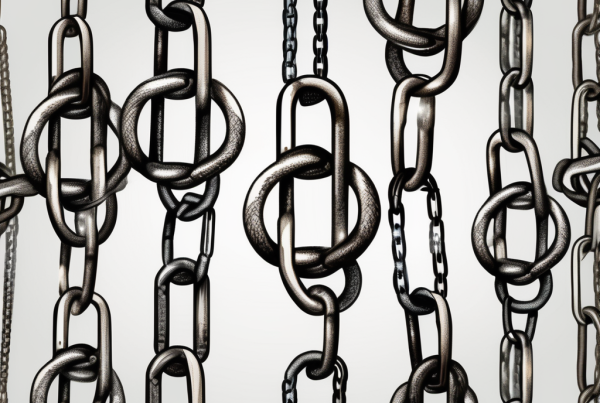Website on-page optimisation is a crucial aspect of search engine optimisation (SEO) that focuses on improving various elements on a website to maximize its visibility and ranking on search engine results pages (SERPs). By optimising the on-page factors, website owners can take control of their website’s performance in organic search results and attract more targeted traffic.
Understanding On-Page Optimisation
Before diving into the details, it is essential to understand the significance of on-page optimisation. This process involves optimising various aspects of a website’s content, structure, and HTML source code, all of which contribute to better search engine visibility. On-page optimisation works alongside off-page optimisation techniques to build a solid foundation for SEO success.
But what exactly makes on-page optimization so important? Well, let’s take a closer look.
The Importance of On-Page Optimisation
On-page optimisation plays a pivotal role in determining a website’s ranking on search engines. By optimising elements such as meta tags, headers, URLs, and internal linking, website owners can provide search engines with clear signals about the relevance and quality of their content. This, in turn, helps search engines understand the website better and rank it higher in relevant search queries.
Imagine you have a beautifully designed website with amazing content, but if search engines can’t understand what your website is about, all your efforts may go unnoticed. That’s where on-page optimisation comes in. It acts as a translator, bridging the gap between your website and search engines, ensuring that your content gets the attention it deserves.
Key Elements of On-Page Optimisation
On-page optimisation comprises several key elements that collectively contribute to a website’s overall SEO performance. Let’s explore them in more detail:
- Optimised Titles: Crafting compelling and descriptive title tags that include relevant keywords is crucial for conveying the page’s content to both users and search engines. A well-optimized title can make a significant difference in attracting organic traffic to your website.
- Proper URL Structure: Creating user-friendly and search engine-friendly URLs helps search engines understand the hierarchy and relevance of website pages. A clear and concise URL structure will not only improve SEO but also enhances the user experience by making it easier for visitors to navigate your site.
- Meta Descriptions: Well-written meta descriptions provide concise summaries of web pages, enticing users to click on search results and improve click-through rates. A carefully crafted meta description can make your website stand out among the sea of search results and increase the chances of attracting potential visitors.
- Keyword Optimisation: Incorporating relevant keywords naturally throughout the content is essential for SEO, but it should be done in a way that enhances the user experience. Keyword stuffing is a thing of the past, and search engines now prioritize high-quality, user-focused content. So, strike a balance between optimizing for search engines and creating valuable content for your audience.
- Header Tags: Utilizing header tags (H1, H2, H3, etc.) properly helps organize the content and signal its relevance to search engines. Headers not only make your content more scannable for users but also provide search engines with a clear structure of your webpage, helping them understand the context and importance of different sections.
- High-Quality Content: Creating informative, engaging, and unique content is crucial for attracting and retaining visitors, as well as satisfying search engine algorithms. Content is the backbone of your website, and by delivering valuable information to your audience, you establish authority, gain trust, and increase the likelihood of earning high-quality backlinks.
- Internal Linking: Building a well-structured internal link network enhances website navigation, improves user experience, and helps search engines discover and index content more efficiently. Internal links not only guide users to relevant pages within your website but also distribute link equity, helping search engines understand the importance and relationship between different pages.
By paying attention to these key elements of on-page optimisation, you can lay a solid foundation for your website’s SEO success. Remember, it’s not just about ranking higher on search engine result pages; it’s about providing a seamless user experience and delivering valuable content that resonates with your audience.
Starting with Keyword Research
Effective keyword research is the cornerstone of successful on-page optimisation. It involves identifying the strategic keywords and phrases that users are likely to search for when looking for information related to a website’s offerings.
Keyword research is not just about finding any keywords; it’s about finding the right keywords that will drive targeted traffic to your website. By understanding what your potential customers are searching for, you can tailor your content to match their needs and increase your chances of ranking higher in search engine results.
Tools for Effective Keyword Research
Several reliable tools are available to simplify the keyword research process. Industry-standard tools such as Google Keyword Planner, SEMrush, and Moz Keyword Explorer can help website owners identify the most relevant and high-performing keywords in their niche.
These tools provide valuable insights into search volume, competition, and related keywords, allowing you to make informed decisions about which keywords to target. By leveraging these tools, you can stay ahead of the competition and ensure that your website is optimised for the right keywords.
Incorporating Keywords into Your Content
Once the target keywords are identified, it’s essential to incorporate them organically into the website’s content. This means using keywords naturally in headings, subheadings, paragraphs, and anchor text. However, it’s important to avoid keyword stuffing, as it can harm both user experience and search rankings.
When incorporating keywords into your content, focus on providing valuable and informative content that resonates with your target audience. By seamlessly integrating keywords into your content, you can improve your website’s visibility in search engine results and attract more qualified traffic.
Optimising Meta Tags for SEO
Meta tags are HTML elements that provide information about a web page to search engines and website visitors. Optimizing meta tags is crucial for improving a website’s click-through rates and overall search visibility.
When it comes to optimising meta tags, crafting effective meta titles is of utmost importance. Meta titles serve as the main headline of a web page in search engine results, and they play a significant role in attracting users’ attention. By carefully choosing compelling and keyword-rich meta titles that accurately represent the content of the page, website owners can greatly improve their click-through rates. Moreover, search engines also consider meta titles when determining the relevancy of a page to a user’s search query, so it is essential to ensure that the meta titles accurately reflect the content and keywords of the page.
Another crucial aspect of optimising meta tags is writing descriptive meta descriptions. Meta descriptions provide concise and informative summaries of web pages, giving users a glimpse of what they can expect to find on the page. By writing well-crafted meta descriptions that incorporate relevant keywords, website owners can entice users to click on their search results. A compelling meta description can make a significant difference in attracting users’ attention and increasing click-through rates. Additionally, search engines also consider meta descriptions when determining the relevance of a page to a user’s search query, so it is vital to write descriptive meta descriptions that accurately represent the content of the page and incorporate relevant keywords.
Optimising meta tags is an ongoing process that requires continuous monitoring and refinement. By crafting effective meta titles and writing descriptive meta descriptions, website owners can improve their website’s visibility on search engine results pages (SERPs) and increase their chances of attracting organic traffic. Remember, meta tags are not just for search engines; they also play a crucial role in providing valuable information to website visitors, helping them understand the content and relevance of a web page. Therefore, investing time and effort into optimising meta tags is a worthwhile endeavor for any website owner looking to enhance their SEO efforts.
Importance of High-Quality Content
High-quality content is the lifeblood of any successful website. In addition to providing value to visitors, engaging content also plays a pivotal role in SEO performance.
Creating Engaging and Informative Content
Creating content that is both engaging and informative helps build credibility and authority within the target niche. Valuable content attracts and retains visitors, encourages social sharing, and increases the likelihood of earning backlinks from reputable sources.
Using Images and Videos for Better Engagement
Incorporating multimedia elements, such as images and videos, can significantly enhance user engagement. Including relevant visual content not only makes the website more visually appealing but also improves its chances of attracting links and social shares.
Utilising Header Tags for SEO
Header tags, such as H1, H2, H3, etc., help structure the content and improve its readability. They also play a crucial role in helping search engines understand the hierarchical structure and relevance of the content on a web page.
The Role of Header Tags in SEO
When used properly, header tags contribute to a website’s SEO efforts by providing clear signals about the content’s organization and importance. They allow search engines to better understand the context and relevance of different sections within a web page.
Best Practices for Using Header Tags
When utilizing header tags, it’s important to follow best practices. This includes using H1 tags for the main page title, structuring subheadings with H2 tags, and using subsequent header tags, such as H3 and H4, to further categorize and organize the content. Proper usage of header tags improves both user experience and SEO performance.
By understanding the key elements of on-page optimization and implementing effective strategies, website owners can significantly improve their website’s visibility, drive targeted traffic, and ultimately enhance their overall online success.








